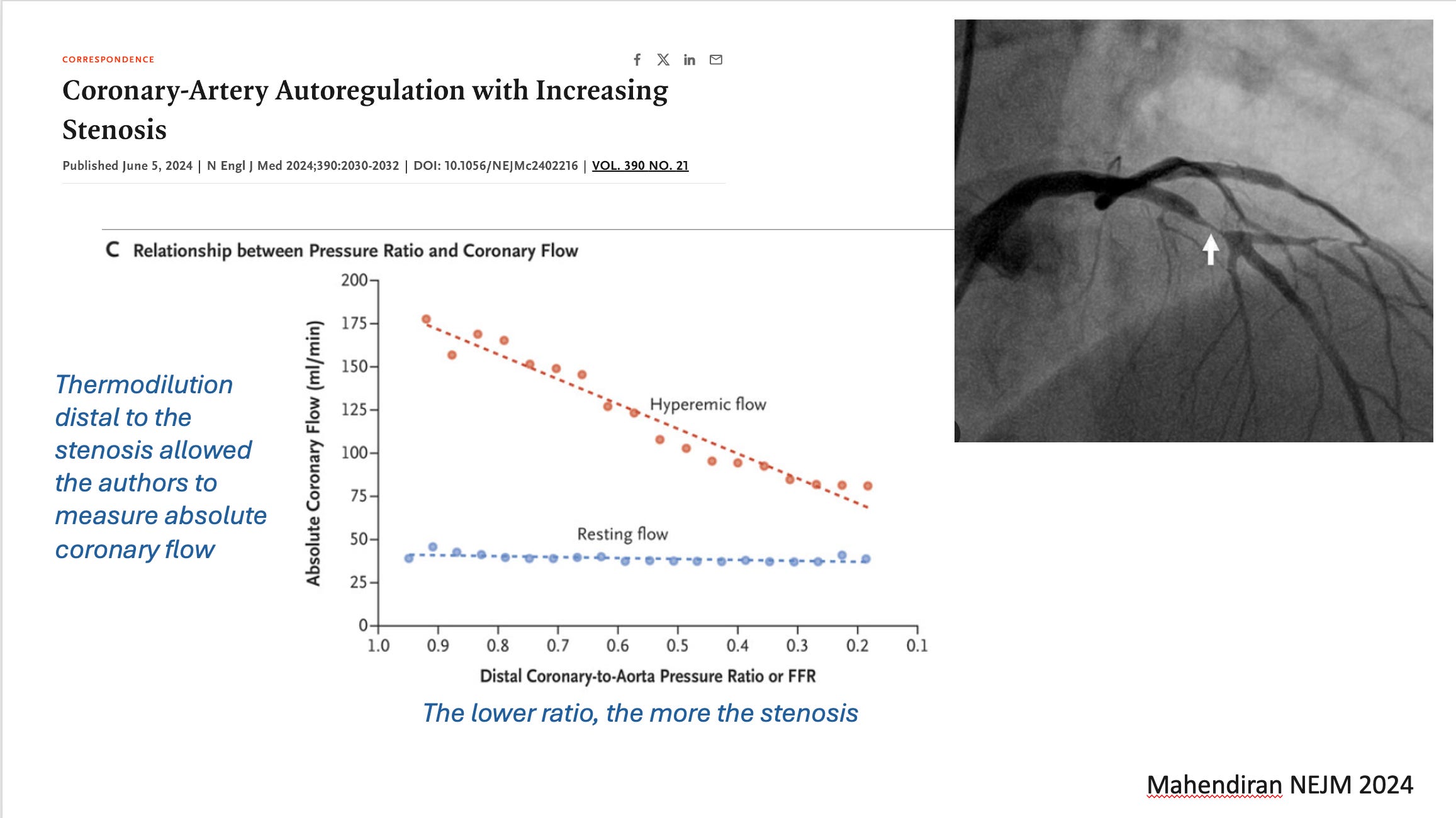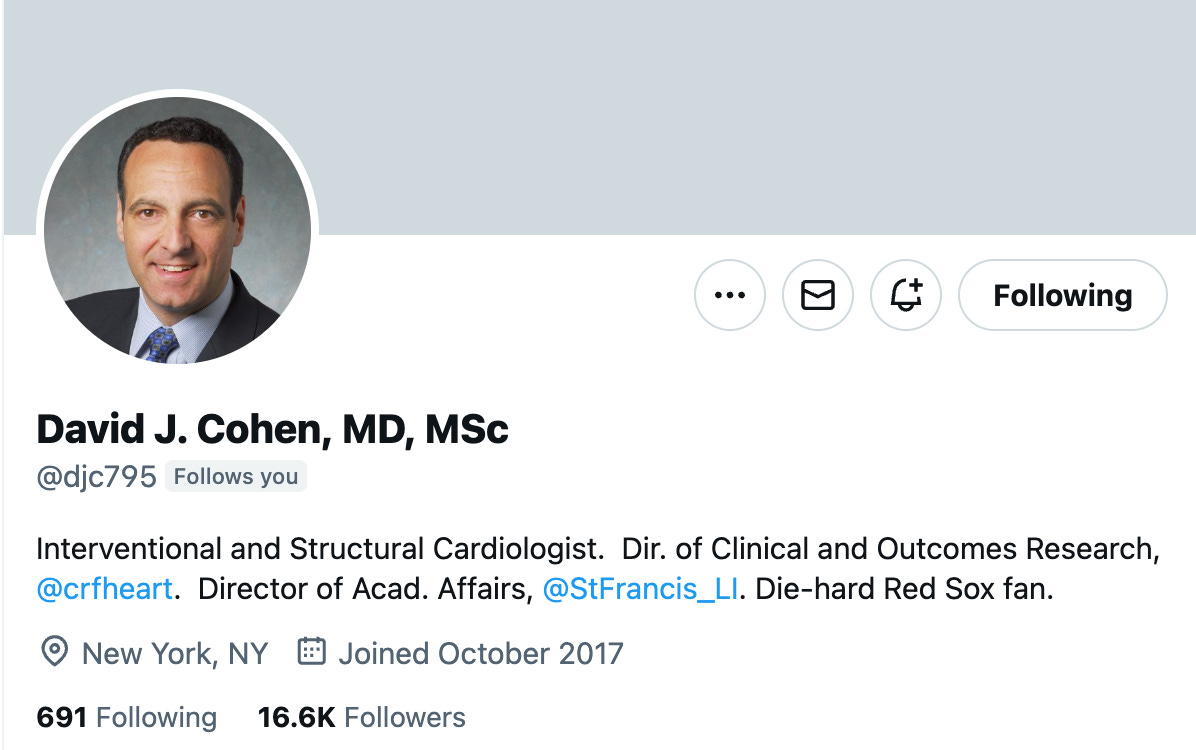A Discussion with Professor Venk Murthy on Coronary Artery Disease
Description
When I type the words coronary artery disease I bet that you picture angiograms with stenotic lesions—blockages in colloquial language.
Indeed a high grade plaque from atherosclerosis in the inside of a coronary artery can limit flow to the heart muscle.
But. But. Not as much as you think. You know why? Because there is something called the coronary microcirculation. Before blood gets to the beating heart muscle it has to go through small blood vessels. So small that you can’t see them.
A study in the NEJM—on one patient—elegantly shows the ability of the microcirculation to autoregulate blood flow in the face of increasing degrees of obstruction in large coronary vessels.
We’ve all seen patients who have severe flow-limiting proximal stenoses, which create little to no angina. A likely reason is the ability of the microcirculation to dilate and improve blood flow—at least at rest or minimal exertion.
My friend Venk Murthy explains this elegant study. I learned a bunch and likely you will too.
We refer often to this figure from the paper. It would be useful to have it handy while you listen.
JMM
Remember all, Sensible Medicine is a reader supported site that is free from industry advertisement. Thank you for your support.
Sensible Medicine is a reader-supported publication. To receive new posts and support our work, consider becoming a free or paid subscriber.
This is a public episode. If you’d like to discuss this with other subscribers or get access to bonus episodes, visit www.sensible-med.com/subscribe















